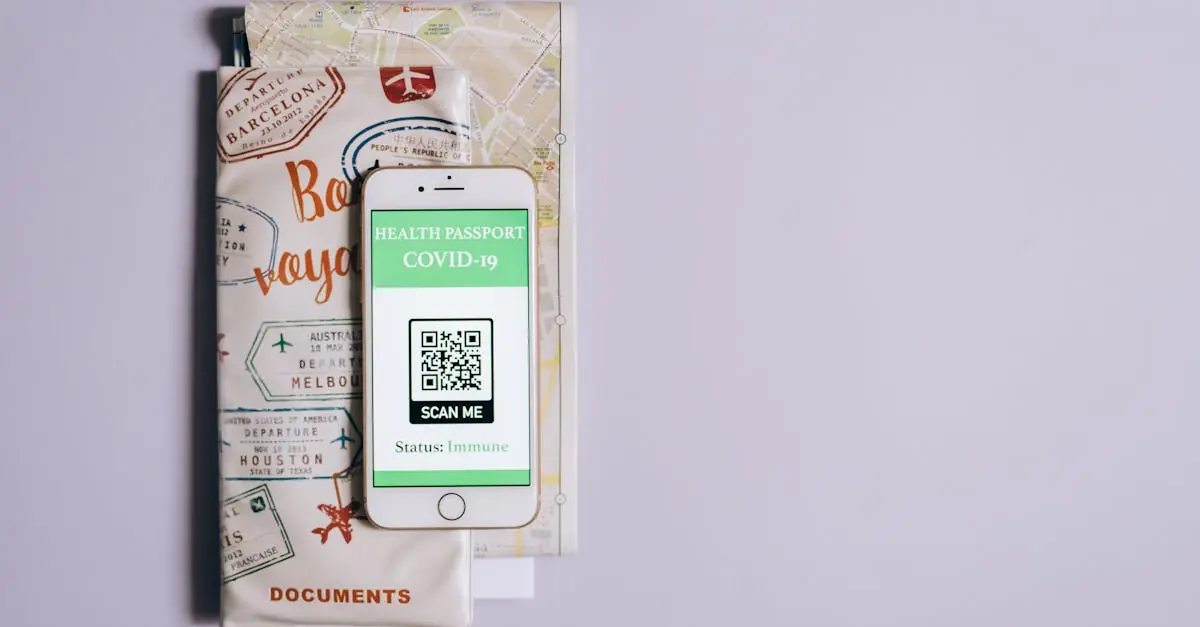Table of Contents
ToggleEver found yourself staring at your iPhone, waiting for that elusive verification code like it’s a magic trick gone wrong? You’re not alone. Many users experience this frustrating phenomenon, wondering if their phone is playing hard to get or if it’s just having a bad day.
Common Reasons for Missing Verification Codes
Missing verification codes on an iPhone frustrates users. Various factors contribute to this issue.
Network Connectivity Issues
Poor network connectivity often prevents messages from reaching the device. Users may not receive verification codes when in areas with weak cellular signals or Wi-Fi interference. Additionally, network settings can inadvertently block incoming messages. Check if airplane mode is enabled; turning it off could help fix the issue. Restarting the device may also reestablish the network connection.
Device Settings and Configuration
Incorrect device settings can hinder the arrival of verification codes. Ensure that message settings allow SMS and MMS messages; disabling these may block verification texts. Users should also verify that “Do Not Disturb” mode isn’t activated, as this can silence notifications. Reviewing any third-party security apps is crucial, since these may inadvertently filter or block messages. Regularly updating the iPhone’s iOS ensures optimal performance with receiving verification codes.
iPhone’s Security Features
iPhone’s security features can sometimes influence the receipt of verification codes. Various settings protect users but may inadvertently block code deliveries.
Two-Factor Authentication Settings
Two-factor authentication boosts account security. It’s essential for users to enable this setting for apps requiring verification codes. If this feature is active, the code gets sent as a message or notification. Users may encounter delays if their networks face issues or if they haven’t correctly configured the feature. Making sure the user’s phone number associated with two-factor authentication is accurate is crucial. Incorrect numbers lead to missed codes.
App-Specific Passwords
App-specific passwords offer additional safety for accounts. In situations where users utilize third-party apps, creating these passwords often becomes necessary. Setting up app-specific passwords allows code receipt for applications not using standard sign-in methods. Users should navigate to their Apple ID and generate a unique password for each app. Once set up properly, app-specific passwords enhance security without interfering with verification code deliveries.
Troubleshooting Steps
These steps can help iPhone users troubleshoot the issue of not receiving verification codes.
Check for Software Updates
Ensuring the iPhone runs on the latest software version can resolve many issues. Users can navigate to Settings, select General, and tap Software Update to see if updates are available. Installing updates often enhances the device’s performance and improves connectivity. Delays in receiving verification codes may occur due to outdated software. Regular updates also incorporate bug fixes that specifically address messaging problems. Scheduling updates for a time when the device isn’t in use can facilitate a smoother process.
Reset Network Settings
Resetting network settings can clear potential issues affecting message delivery. To perform this reset, users should go to Settings, select General, and tap Reset. After that, choose Reset Network Settings. This action restores all network-related configurations to default, which often resolves connection issues. Users may also need to re-enter Wi-Fi passwords after completing this reset. Network issues may stem from incorrectly configured settings or glitches that disrupt verification code delivery. Ensuring a fresh start can significantly improve the receipt of important messages.
When to Contact Apple Support
Reaching out to Apple Support proves useful when encountering persistent issues with verification codes. If it’s been several attempts without success, users may require expert assistance. Users facing difficulty even after checking network settings should consider this option.
Many find it helpful to document error messages or symptoms before contacting support. Doing this can expedite the troubleshooting process, allowing the representative to understand the situation better. Inspecting Apple’s official support page may provide additional guidance tailored to similar issues.
Cases involving unknown errors often warrant professional input. If users suspect their accounts are compromised, immediate contact with Apple Support is essential. Users needing to update their Apple ID or iCloud account settings may also need to reach out for assistance.
Consulting with Apple Support can clarify if the issue relates to account settings or regional service interruptions. They provide resources to verify whether the problem stems from Apple’s servers or the user’s device.
If all else fails, enlisting professional help ensures a thorough investigation into the user’s specific case. Apple’s well-trained support team handles various concerns, from account-related issues to device functionality.
Experiencing delays in receiving verification codes on an iPhone can be frustrating. By addressing network connectivity issues and ensuring correct device settings users can significantly improve their chances of receiving codes promptly. Regularly updating iOS and managing security features also play a crucial role in this process.
If problems persist despite these efforts it’s wise to reach out to Apple Support for assistance. They can provide tailored solutions and help identify any underlying issues. With the right steps and support users can regain confidence in their ability to receive verification codes without unnecessary delays.





